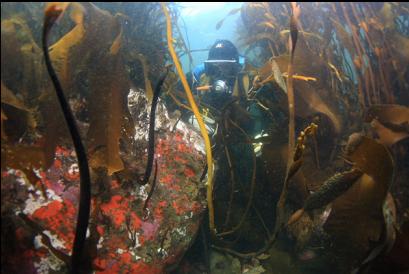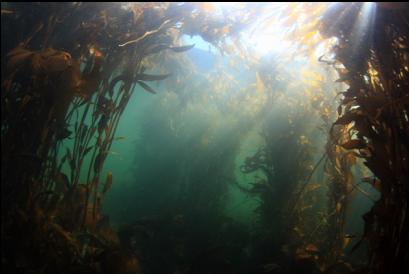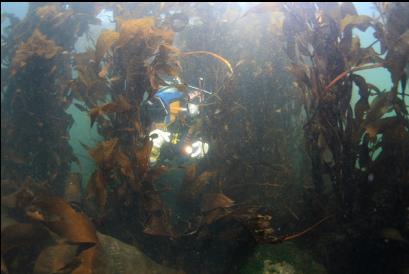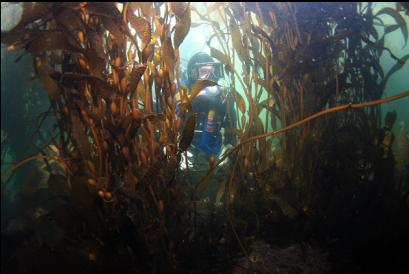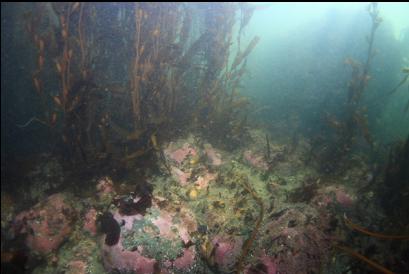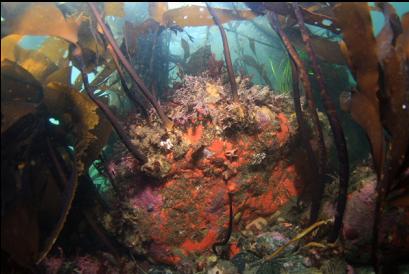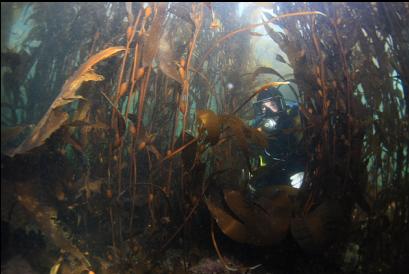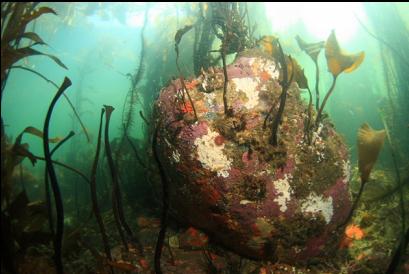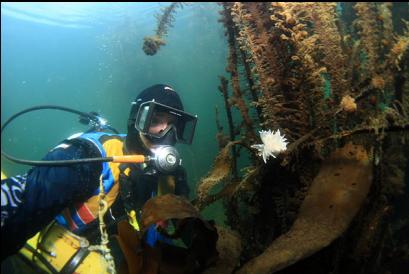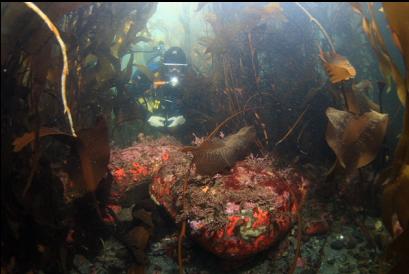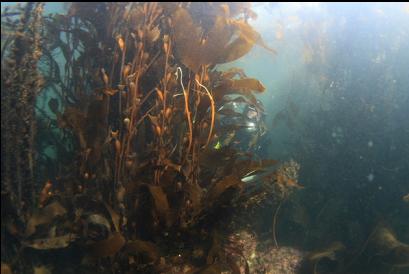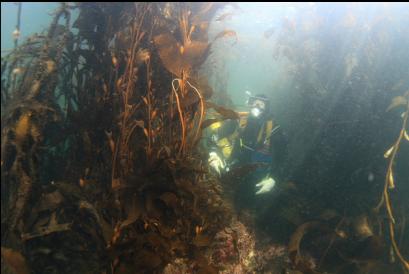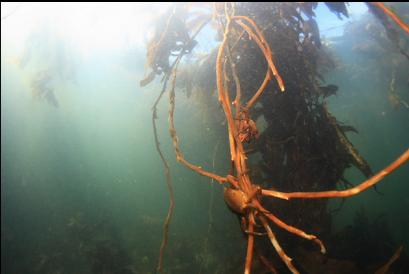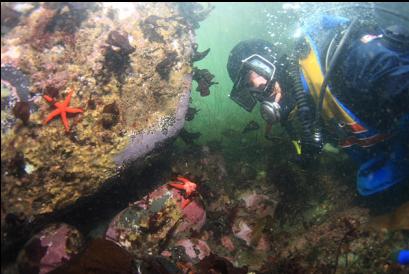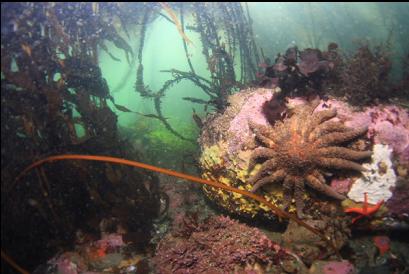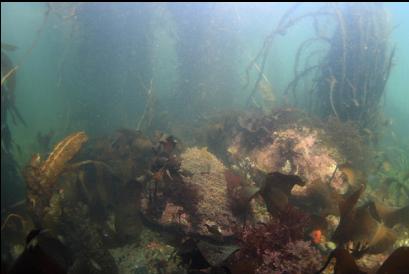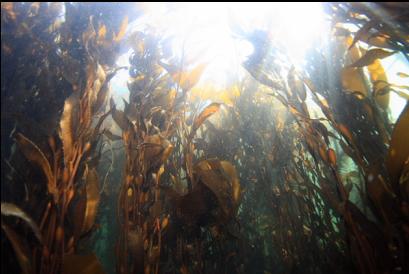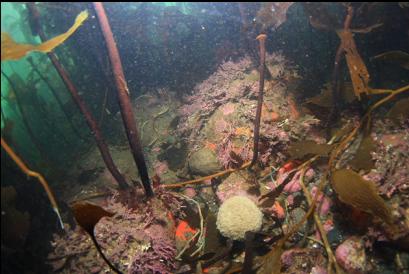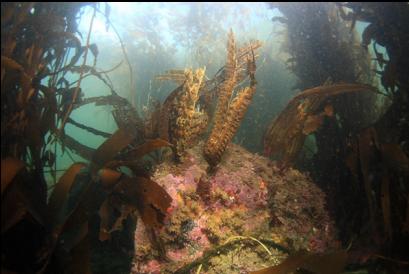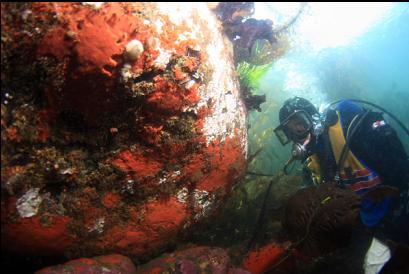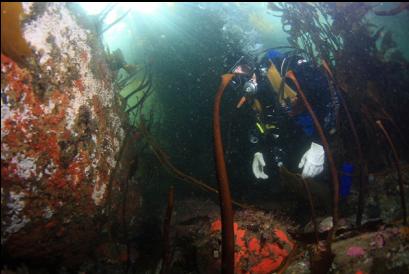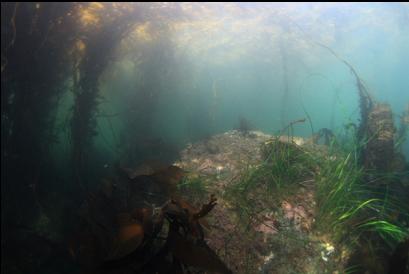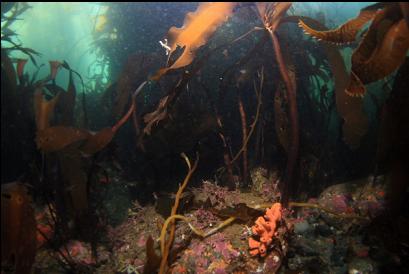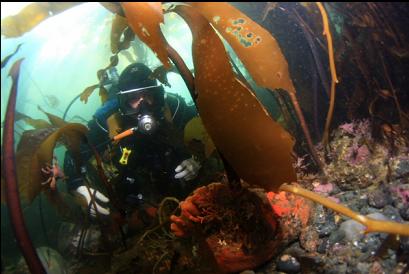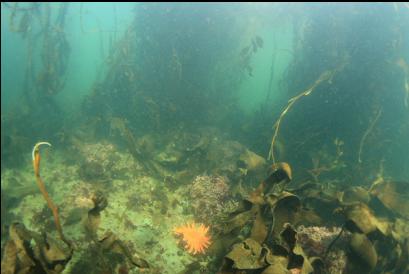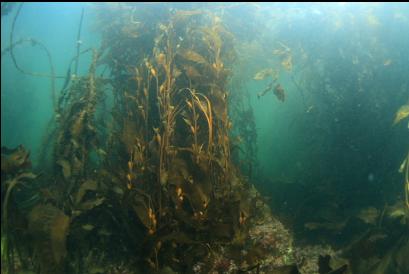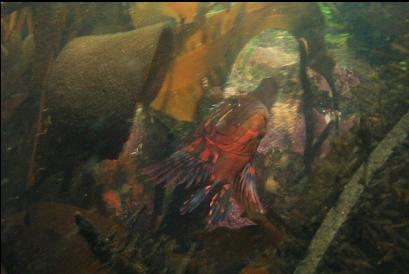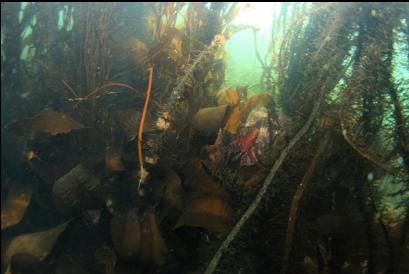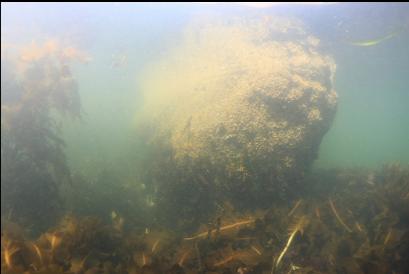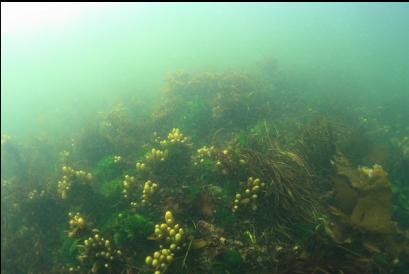I wanted to dive here again before the Macrocystis kelp died back for the winter. These photos are from Sept. 9, 2011. Visibility was the same as last time (less than 6 feet near shore and 10 feet out in the kelp). My maximum depth this time was only 9 feet. The kelp was already on it's way out. Last time it was a healthy golden colour, but now it was almost silty and starting to fall apart. The columns of kelp rising up were still there, but the dark "rooms" were much more wide open and exposed. The ceiling of kelp had thinned out. I guess if you want to see this forest at it's best, go earlier in the Summer. The rocks under the kelp were still smothered with pink coraline algae and colourful patches of tunicates and encrusting sponge. I saw several round, fist-sized, white, "lacy"-looking sponges. There were also some yellow, finger-type sponges. I wished I had a macro lens for all the opalescent nudibranchs. I saw a few of the giant perch again. The kelp greenlings here also seemed larger than average. I saw a flash of orange in the kelp. It was a rock greenling, which I've only seen 3 times before in my life. I only managed one photo from farther away than I liked. I stalked it for awhile around the kelp holdfasts, but it was too shy to hang around.
